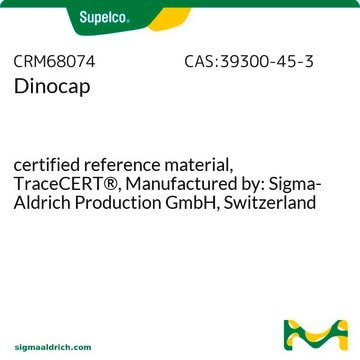133221
Bis(5-chloro-2-hydroxyphenyl)methane
95%
Synonyme(s) :
Dichlorophène
About This Item
Produits recommandés
Pureté
95%
Forme
powder
Pf
168-172 °C (lit.)
Solubilité
95% ethanol: soluble 1g/g
methanol: soluble
petroleum ether: soluble
toluene: very slightly soluble
water: insoluble
Chaîne SMILES
Oc1ccc(Cl)cc1Cc2cc(Cl)ccc2O
InChI
1S/C13H10Cl2O2/c14-10-1-3-12(16)8(6-10)5-9-7-11(15)2-4-13(9)17/h1-4,6-7,16-17H,5H2
Clé InChI
MDNWOSOZYLHTCG-UHFFFAOYSA-N
Vous recherchez des produits similaires ? Visite Guide de comparaison des produits
Description générale
Application
Clause de non-responsabilité
Mention d'avertissement
Warning
Mentions de danger
Conseils de prudence
Classification des risques
Acute Tox. 4 Oral - Aquatic Acute 1 - Aquatic Chronic 1 - Eye Irrit. 2
Code de la classe de stockage
11 - Combustible Solids
Classe de danger pour l'eau (WGK)
WGK 3
Point d'éclair (°F)
Not applicable
Point d'éclair (°C)
Not applicable
Équipement de protection individuelle
dust mask type N95 (US), Eyeshields, Gloves
Certificats d'analyse (COA)
Recherchez un Certificats d'analyse (COA) en saisissant le numéro de lot du produit. Les numéros de lot figurent sur l'étiquette du produit après les mots "Lot" ou "Batch".
Déjà en possession de ce produit ?
Retrouvez la documentation relative aux produits que vous avez récemment achetés dans la Bibliothèque de documents.
Notre équipe de scientifiques dispose d'une expérience dans tous les secteurs de la recherche, notamment en sciences de la vie, science des matériaux, synthèse chimique, chromatographie, analyse et dans de nombreux autres domaines..
Contacter notre Service technique









